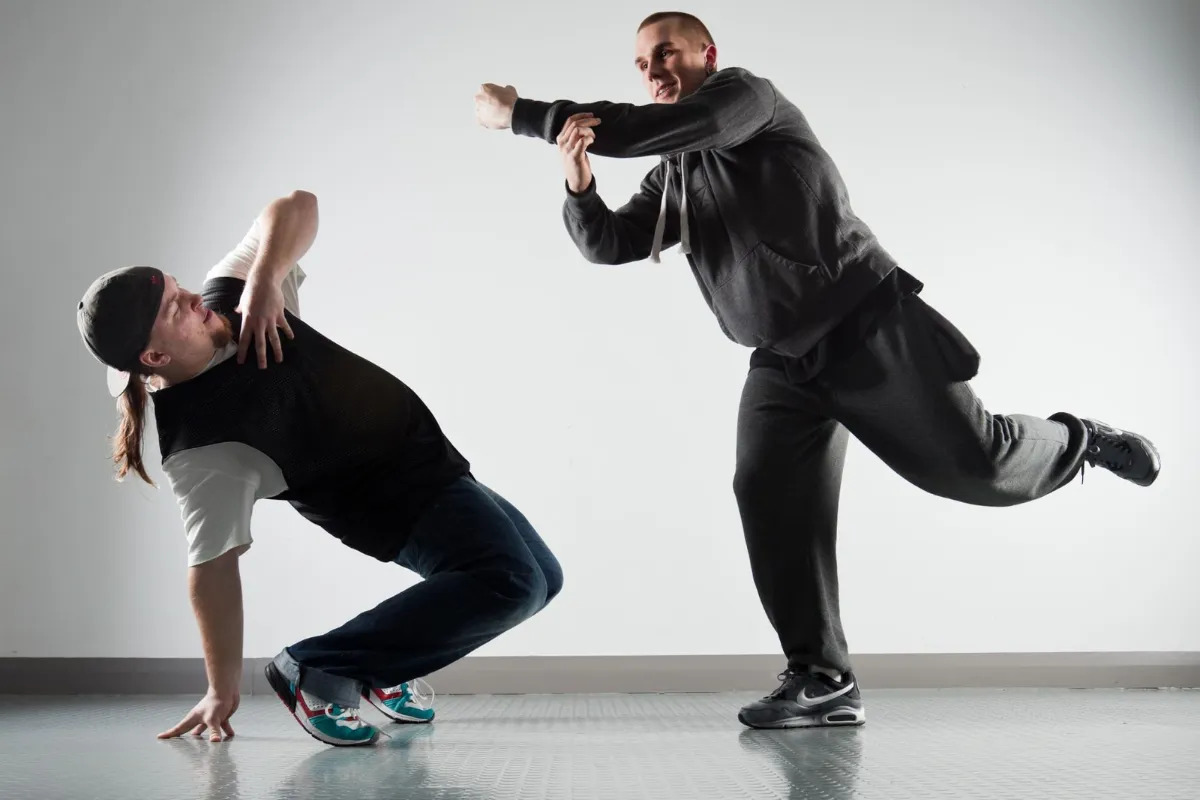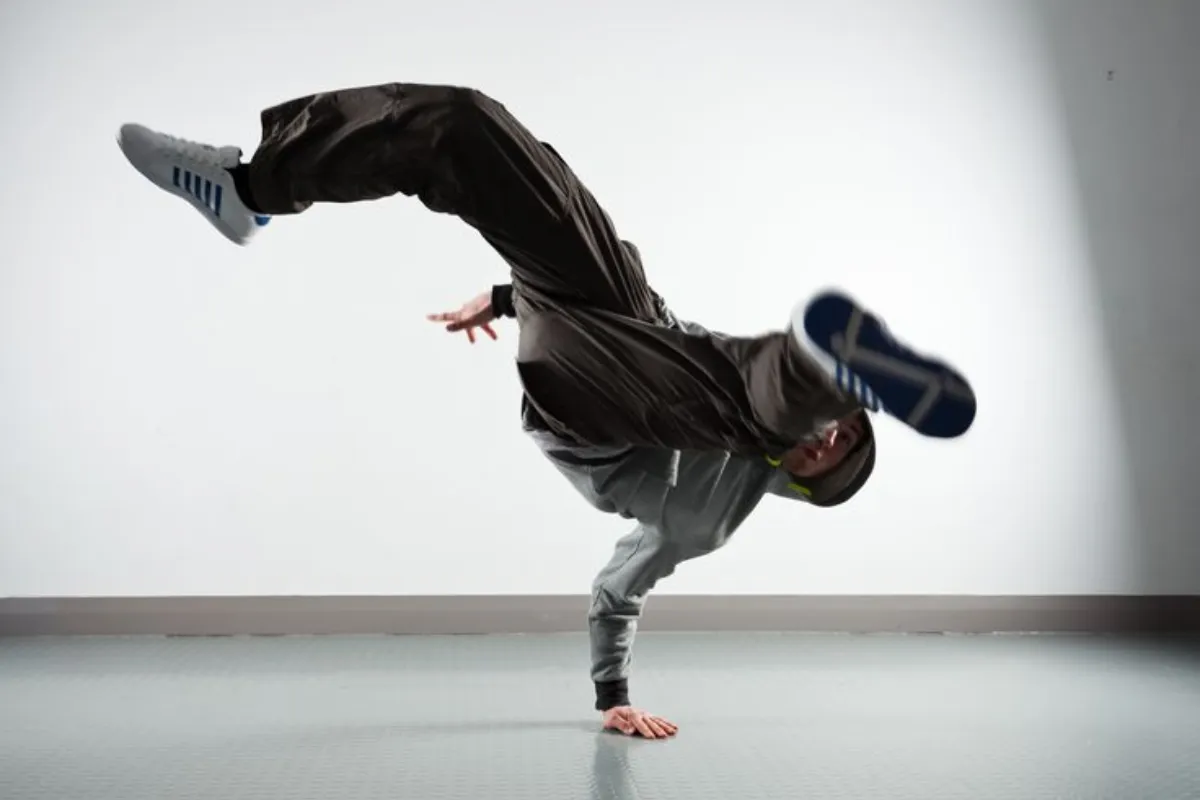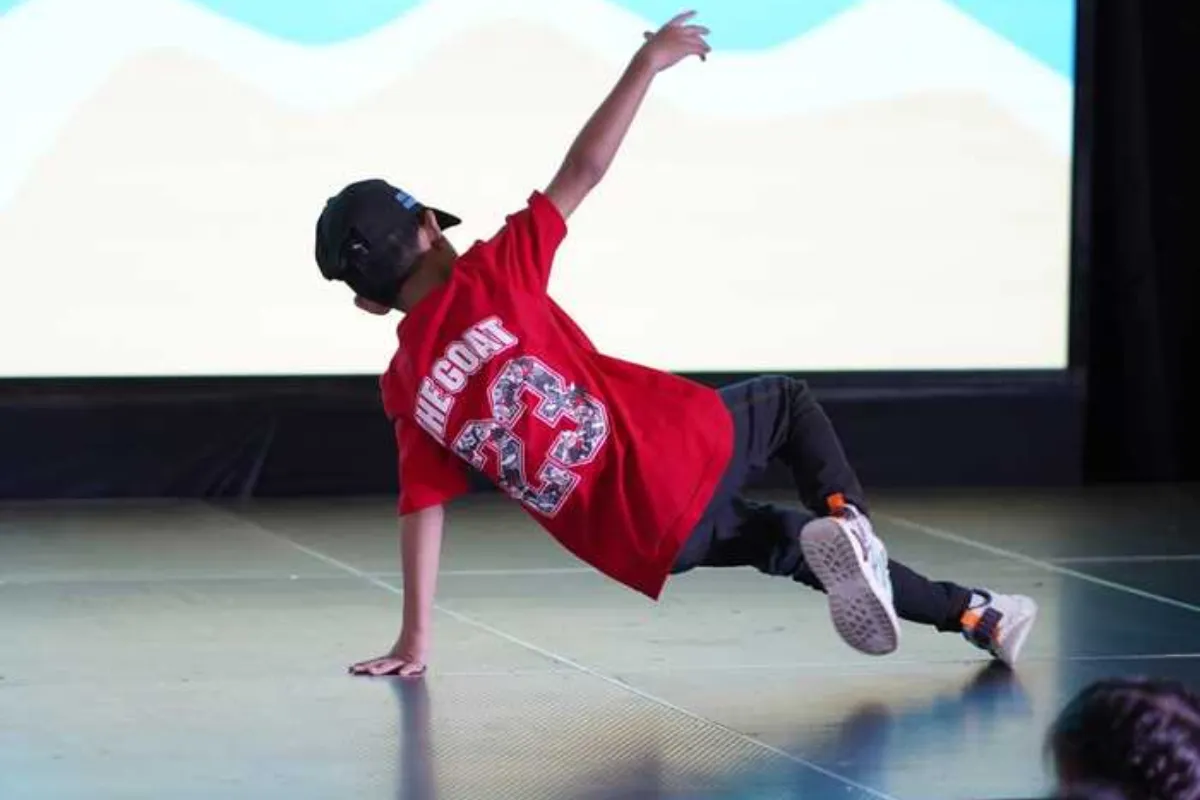What is Breakdance? Breakdance is an exceptional dance form that blends highly athletic and acrobatic movements with elements from popping, locking, and other street-style dances. Breaking typically involves using your body as a percussive instrument, incorporating techniques like popping, locking, and specific styles of breaking. Additionally, it encompasses diverse dance forms such as house dancing and hip-hop. In breakdancing, dancers often aim not only to showcase their individual skills but also to collaborate within crews or groups, collectively advancing the art form.
What contributes to breakdance’s enduring popularity? Some believe it’s because breakdancers can exhibit their talents before any audience worldwide, making it a versatile and universally appealing art form. At its core, breakdancing is about expressing oneself through fluid movement, synchronizing every action to the rhythm and beats of the music.
The origins of breakdancing trace back to New York City in the 1970s, where it initially emerged as a form of freeform dance. Street gangs and youth embraced breakdancing as a way to entertain themselves and foster camaraderie among members.
Today, breakdancing culture encompasses more than just the dance itself; it embodies an entire lifestyle. Originating predominantly among young African Americans in America’s inner cities, breakdance culture became intertwined with the burgeoning hip-hop music scene.
Breakdancers move swiftly and rhythmically, often incorporating body percussion to accentuate their movements and express their creativity. They engage in competitive settings known as breaking battles, where dancers showcase their skills, but also participate socially at parties and events.
Achieving proficiency in breakdancing demands significant strength and flexibility. Dancers train rigorously with aerobic exercises such as push-ups and sit-ups. The repertoire of moves includes top rocks (upright dance steps), down rocks (floor-based maneuvers), power moves (dynamic spins and tricks), freezes (static poses), and intricate footwork.
By mastering these elements, breakdancers not only enhance their physical abilities but also deepen their connection to the rich cultural heritage and artistic expression inherent in breakdance. Today, breakdancers participate in competitive events like the UK B-Boy Championships, which are held annually worldwide. Notably, in 2024, breakdancing will make its Olympic debut.
Originally rooted in self-defense tactics, breakdancing has evolved into highly intricate and athletic dance forms that require exceptional skill and athleticism. In this article, let’s delve into the Principles of Breakdancing: Mastering B-Boying and B-Girling with Learn Breakdance.
The Evolution of Breakdancing

Breakdance culture is a global tradition that has transcended continents over the years. But, when exactly did breakdancing originate?
Interestingly, elements of breakdancing trace back to African slaves in the United States during the early nineteenth century. Breakdancing, also known as B-boying, emerged as a style of street dance within the hip-hop culture, which gained popularity alongside punk rock in the 1970s and 1980s.
The art form gained widespread attention as hip-hop music became increasingly popular in America during the 1960s and 1970s. Black teenagers utilized singing and dancing as expressive forms to voice their discontent with racism.
As hip-hop culture expanded beyond New York City and captivated global audiences in the mid-1980s and 1990s, breakdancing also began to spread worldwide.
You might wonder, “Why is it called breakdancing?” The term ‘breakdance’ was initially coined in The Village Voice newspaper in New York City. It referred to members of crews like Rock Steady Crew (RSC) and New York City Breakers (NYCB), who performed on sidewalks and in subway stations.
DJ Kool Herc, a pivotal figure in hip-hop, played a significant role in popularizing breakdancing during the 1970s. He introduced “breaks,” which are bass-heavy and rhythmic sections extracted from funky tunes, thereby contributing to the genre’s rise.
As the breaks energized break dancers, DJ Kool Herc began inviting b-boys to his shows and engaging with them through his microphone.
During this era, Michael Jackson emerged as one of the most celebrated celebrities of the 1980s. His performances featuring breakdance moves, including his iconic moonwalk, propelled the breakdancing genre to unprecedented popularity.
Inspired by his success, numerous record labels began incorporating breakdancers into music videos of R&B, pop, and rap artists.
Following this trend, celebrities like Britney Spears also embraced breakdancing culture, contributing to its transformation from a street dance style to a global phenomenon.
Fundamentals of Breakdancing

Different practitioners execute elements of breakdancing with their own unique interpretations, influenced by the context and style of dance surrounding them. These movements are meticulously choreographed to showcase proficiency and expertise in breakdancing through seamless and flawless gestures.
Now, let’s delve into the diverse elements of breakdancing!
Breakdancing culture surged into the mainstream alongside the rise of hip-hop music in the 1970s, captivating global audiences ever since.
- Top rock: Top rock steps encompass the dance movements performed while standing upright. They serve as the initial expression in a breakdancer’s routine, setting the rhythm and style. Breakdancers often begin with intricate top rock sequences, blending them seamlessly with footwork, floorwork, and freezes to create a dynamic and cohesive performance.
- Down rock: Down rock steps involve movements performed entirely on the ground. Breakdancers maintain balance using their hands and feet, executing introductory sequences like the six-step that involve spinning and transitioning between positions.
- Drop: The transition from down rock to top rock is known as a drop. Breakdancers can execute drops in various styles, from simple to complex, involving dramatic movements or unique visual elements that enhance their performance.
- Flips: Flips are acrobatic maneuvers where dancers leap into the air and rotate around their axis, either vertically or horizontally. Beginners typically start with flips that do not require additional equipment, such as handstands, focusing on developing technique and control.
- Power moves: Power moves are dynamic and athletic maneuvers influenced by gymnastics and martial arts. Examples include backspins, head spins, windmills, and swipes, emphasizing momentum and physical prowess in breakdancing routines.
Culture of Breakdance

For anyone who has witnessed breakdancing, its profound cultural impact on contemporary society is undeniable. Originating as a street dance form in 1970s New York, breakdancing has evolved into one of the most beloved dance styles worldwide.
Over time, breakdancing shifted from a recreational activity to a competitive pursuit. Imagine attempting to breakdance in a bustling subway station: navigating through passengers exiting trains, bustling crowds, and the pulsating beats of breakbeats blaring from speakers, which punctuate every jerky and precise movement.
Breakdance culture thrives in such environments, where music intertwines with the frenetic pace of everyday life, creating a space where movement transcends inhibition and self-expression reigns supreme.
As journalist Allison Samuels observes, “Breakdancing also provided kids with something to engage in outside of school or homework.” Today, breakdancing has transformed into a global phenomenon. Whether in malls or city streets worldwide, one can easily encounter individuals gyrating to music pumped from a DJ’s smartphone.
The rapid spread of this dance craze was perhaps inevitable, yet at its core, breakdancing remains rooted in rich traditions and a storied history that continues to captivate and inspire dancers and audiences alike.
Benefits of Breakdance

Breakdancing is becoming increasingly popular among people from diverse backgrounds, offering numerous mental and physical benefits once mastered.
STRESS RELIEF
Breakdancing serves as an effective outlet for releasing built-up muscle tension and provides a positive focal point for the mind, which contributes significantly to stress relief. It allows practitioners to channel and dissipate feelings of frustration or anger accumulated throughout the day.
IMPROVES MENTAL HEALTH
Engaging in breakdancing can enhance mental well-being by empowering individuals to manage and regulate stress levels through physical exertion. Moreover, it promotes discipline, focus, and perseverance, fostering a sense of achievement and progress towards personal goals.
ENHANCES FITNESS LEVELS
Breakdancing is a comprehensive workout that helps individuals achieve optimal fitness levels. It offers substantial physical benefits such as increased strength, flexibility, improved balance, coordination, weight loss, cardiovascular endurance, and upper body muscle development.
Dive into the electrifying world of breakdance through our exhilarating online dance classes. Designed to unleash your inner rhythm and creativity, our dynamic instructors guide participants through an exciting journey of movement, rhythm, and self-expression. Whether you’re a beginner eager to master the fundamentals or a seasoned dancer looking to refine your skills, our comprehensive curriculum caters to all levels of expertise.
Join our vibrant community of breakers and immerse yourself in the high-energy culture of this iconic dance style. From mastering intricate power moves to perfecting agile footwork, our classes offer a diverse range of techniques and styles. Don’t miss this opportunity to be part of the excitement – enroll in our dance classes today and let the beat drop as you soar to new heights in breakdancing!
Career Outlook for Break Dancers

Given the diverse career paths available to breakdancers, predicting their professional future varies widely. Some may choose to pursue solo careers, while others opt to collaborate with groups or companies.
For those inclined towards individual pursuits, opportunities may include roles as dance instructors or choreographers. On the other hand, those seeking a more unconventional path might consider establishing their own dance company, organizing performances for various clients.
Moreover, there’s significant potential in the field. According to the Bureau of Labor Statistics, employment prospects for dancers and choreographers are expected to increase by 29% from 2020 to 2028. This growth indicates a robust demand for skilled professionals in the industry.
Additionally, professional breakdancers can leverage sponsorships as another avenue of income. Sponsorships typically involve compensation in exchange for promoting businesses, providing an additional source of revenue and visibility.
Overall, the future looks promising for aspiring breakdancers, offering a range of career opportunities and avenues for professional growth and success.


Leave a reply